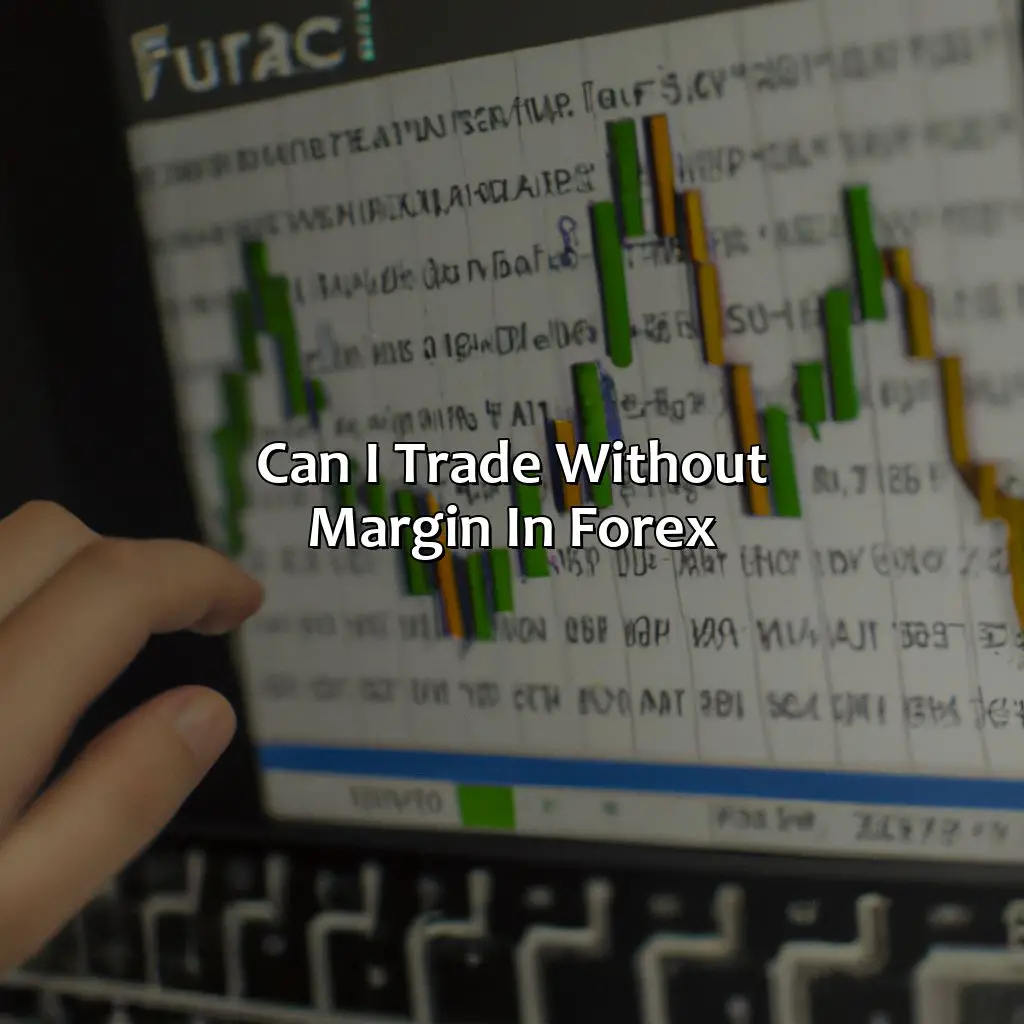
Key Takeaway:
- Margin trading is a common practice in forex trading that allows traders to control positions that are larger than the amount of capital they have. However, it also involves borrowing money from a broker and involves increased risk.
- Owning the underlying asset is an alternative to margin trading in forex. It is a strategy of buying and holding the physical currency and trading without leverage allows traders to avoid interest fees and margin calls.
- Forex traders who want to trade without margin can opt for spot market trading, where traders deal with the current market price of currency pairs, or choose to use options to trade forex.
What is Margin Trading in Forex?
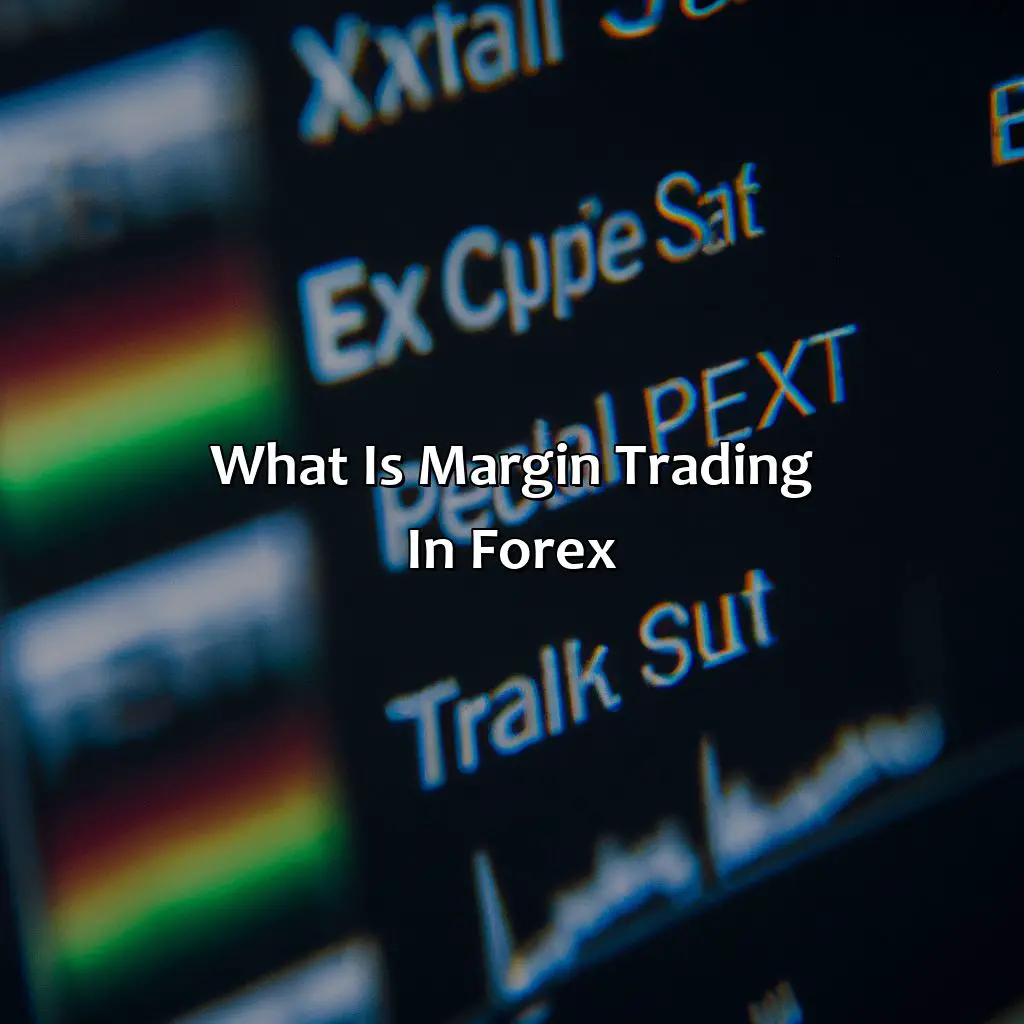
Photo Credits: forexbrokerreport.com by Jesse Young
Do you want to understand margin trading in forex? First, learn its definition. It’ll help you differentiate it from other trading techniques. If you’re interested in trading on margin, find out how it works. Knowing these details will help you make smart decisions while trading.
Definition of Margin Trading
Margin Trading is the practice of borrowing funds from a broker to open a position in Forex trading. The borrowed amount, known as margin, is used to increase the trader’s buying power and thereby increase potential profits. Margin trading involves leveraging one’s capital for a potentially higher return.
This type of trading can be advantageous if done with proper risk management techniques in place. However, using too much leverage can result in significant losses that exceed one’s account balance.
When traders open a position using margin, they are essentially taking out a loan from the broker. Therefore, it is essential to understand the margin requirements before opening any positions.
Pro Tip: Always have a clear understanding of the risks involved when engaging in margin trading in Forex as this can lead to major losses if not managed properly. Margin trading in forex is like renting a Lamborghini with a credit card- exhilarating but risky.
How Does Margin Trading Work in Forex?
Margin trading in forex involves borrowing money from a broker to trade currencies. The amount of leverage provided varies based on the selected margin requirement, which is calculated based on the type and size of trading account. When a trader opens a position with borrowed funds, they are essentially betting on the market’s direction. Profits and losses are magnified due to the leverage used.
To start margin trading in forex, traders first need to deposit a certain amount of funds into their account as collateral. The broker will determine how much they can borrow based on this initial deposit and the margin requirement they have selected.
The borrowed funds can then be used to open positions that exceed the trader’s available cash balance. This allows for potentially higher profits but also increases risk if trades do not go as planned.
One important aspect of margin trading in forex is understanding how margin calls work. If a trader’s account balance falls below a certain level, their broker will initiate a margin call asking them to deposit additional funds to maintain their positions or risk having them automatically closed out.
Pro Tip: Always have enough funds in your account to cover potential losses and avoid being caught off guard by margin calls.
Margin requirements are like the speed limit signs on the forex highway – crucial to follow or face painful consequences.
Margin Requirements for Forex Trading
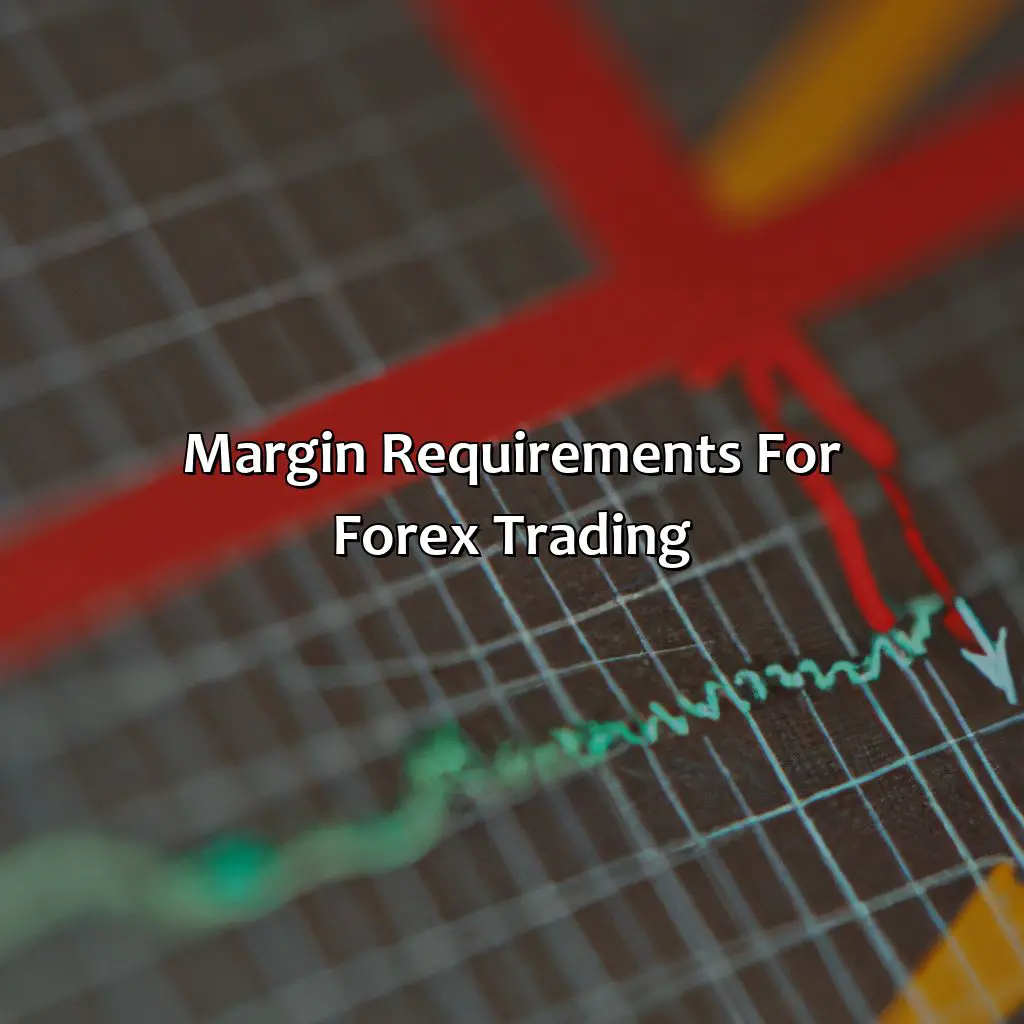
Photo Credits: forexbrokerreport.com by Douglas Baker
To grasp the intricate details of margin requirements for Forex trading, one must dive deep into this subject. We will look at aspects such as definitions and calculations. Plus, we’ll study leverage and margin. These are essential to understanding margin requirements in Forex trading.
What Are Margin Requirements?
Margin requirements refer to the amount of capital or funds a trader needs to hold in their account in order to open and maintain a trading position in Forex. Margin requirements are set by brokerages and are calculated based on several factors, including leverage and the size of the position being opened. In simple terms, margin requirements act as a deposit that traders are required to make when opening a trade so they can borrow funds from their broker and take advantage of leverage.
Understanding margin requirements is essential when trading Forex. Brokers specify the minimum margin requirement for each currency pair, which is typically expressed as a percentage value such as 1%, 2%, or 5%. The margin requirement varies depending on factors such as the liquidity of the underlying currency pair, volatility, market conditions, and regulatory requirements.
It is important to note that when the price moves against the trader’s position, their losses will be magnified due to leverage. As such, if the account balance falls below the minimum margin requirement, traders may be subject to stop-out levels where all existing trades are closed automatically in order to prevent further losses.
In summary, margin requirements refer to the minimum amount of capital a trader must hold in their account as collateral when opening and holding positions in Forex. It is crucial for traders to understand these requirements since they have an impact on trading performance and potential profitability.
According to Investopedia.com – “The increased use of leverage carries an added risk through wider spreads and greater price fluctuations.”
Trying to understand leverage and margin in forex is like trying to balance your bank account after a night out – it’s confusing and you’ll probably regret it.
Understanding Leverage and Margin
Forex trading involves the use of leverage and margin that allows traders to control large positions with a small amount of capital. An understanding of leverage and margin is crucial for successful Forex trading.
Leverage is the ability to control a larger sum of money using a smaller amount of actual funds. Margin refers to the initial deposit that traders put down in order to enter into positions significantly larger than their actual account size. The current margin ratio can be expressed as a percentage and represents the amount of money required to enter into and maintain positions.
An important aspect of understanding leverage and margin is their combined effect on potential profits and losses. High leverage may lead to large potential gains, but also higher risks if trades move against you.
It’s important to note that different brokers may have different requirements for leverage and margins, so it’s essential to learn about your broker’s terms before starting trading with real money.
In summary, understanding leverage and margin is crucial in Forex trading for managing risk while allowing traders to make potentially large profits through controlled investments.
Calculating margin requirements is like trying to solve a Rubik’s cube, except the consequences of getting it wrong are much more expensive.
How Are Margin Requirements Calculated?
Margin requirements for forex trading are calculated by determining the total value of an open trading position and then applying a margin amount as a percentage of that position’s value. The margin required is determined by the currency pair being traded, the size of the position, and the leverage chosen.
The calculation of margin requirements ensures that traders maintain enough equity in their accounts to cover potential losses. Margin requirements are calculated by taking into account the market conditions, such as currency volatility, as well as the specific risks associated with each currency pair.
Traders can monitor their margin requirements through real-time information provided by their broker’s trading platform. This helps traders stay within their allocated funding levels and avoid triggering a margin call.
It is important for traders to understand how margin requirements are calculated so they can manage their risk effectively. They should also be aware of any changes to margin requirements that may occur due to market volatility or changing regulations.
To minimize risk when trading forex, it is recommended that traders start with a demo account and practice managing margins before using real money. They can also use analytical tools to help them calculate margin requirements for open positions and adjust leverage accordingly.
Trade without margin? It’s like going to a gunfight without bullets – not recommended for the faint-hearted.
Trading Forex Without Margin

Photo Credits: forexbrokerreport.com by Gerald Johnson
Want to trade Forex without margin? Options are there! Let’s discuss them. Benefits and drawbacks must be known. Plus, strategies to optimize trading performance too. Here you go:
Options, benefits, drawbacks and strategies for no-margin Forex trading!
No Margin Forex Trading Options
One option is to open a cash account, which requires the full payment of the traded amount before buying or selling any currency.
Another option is trading through exchange-traded funds (ETFs), which enables traders to buy and sell forex in an ETF fund structure, eliminating the need for margin.
Social trading platforms like eToro also offer no-margin forex trading where you can copy professional traders’ strategies without having to use leverage.
No Margin Forex Trading Options are designed for traders who want limited risk as they can only lose what they have invested. Nevertheless, these options might have higher trading fees than regular margin accounts.
While no-margin forex trading has its benefits, such as limiting financial risk, it also has some drawbacks. Understanding these is crucial before you engage in these types of trades.
A study by Investment Bank Morgan Stanley shows that retail forex trading accounted for 5.5% of overall spot volume in 2019.
Trading without margin is like playing a game of chess without sacrificing any pieces – you may preserve your resources, but you’ll likely miss out on big moves.
Benefits and Drawbacks of Trading Without Margin
Trading Forex without Margin – Positive and Negative Aspects
When considering trading Forex without margin, there are particular benefits and drawbacks:
- Benefits:
- Eliminating the risk of losing more than initial investment
- Increased flexibility in choosing leverage and position sizes
- Possibility of higher returns with a smaller initial investment
- Drawbacks:
- Limited potential profits compared to margin trading
- Possible reduction of market exposure due to smaller positions
- No access to certain advanced trading strategies that require leverage
It is essential to weigh the positives and negatives of Forex trading without margin. Additionally, remember that it is feasible to employ diverse No Margin Forex Trading Strategies.
Do not miss out on this rare opportunity for stable profitability – decide today whether trading Forex without margin is suitable for you.
Zero margin, zero worries – these trading strategies will have you cashing in without margin in no time.
Trading Strategies for No Margin Forex Trading
- Focus on Longer Time Frames – Look for trades that will last longer than usual, as they will require fewer pips to reach your target. This approach can help reduce market noise and decrease the risk of encountering short-term sharp moves.
- Use Short-Term Volatility to Your Advantage – If there is volatility in the price of your currency pair, you can use it as an opportunity to make quick profits even with smaller trade sizes.
- Cut Down Your Position Size – Reducing your trading size could increase your longevity in trading without margin.
- Adjust Stop-Loss Orders Based on Volatility – Make sure you adjust your stop-loss orders based on how much volatility is present in the market. With less margin, traders will need wider stop-loss orders
- Avoid Overtrading – Trade with discipline! No margin trading should accompany any kind of emotional or irrational thinking. Stick to well-planned strategies and always consider macroeconomic factors before entering into trades.
- Spend More Time Analysing the Market- Lack of margin means traders need to be extra diligent about reading news and interpreting data right from facts and not emotions. Analysis from several sources before making any decision is necessary.
Another important point to keep in mind while practising no-margin forex trading is placing Stop Loss at critical levels so that it remains intact if the trade turns against you unexpectedly.
Interested in Trading Forex without Margin? Here are some points worth knowing:
- No-margin forex trading has some long-term benefits, like loss minimization and strong risk management techniques as you tend do-over analysis due to low trading volumes.
- The main drawback of no-margin forex trading is the high chance of losing lots of profit potential for every trade as reduced margins don’t allow for big trades.
- To resume trading with margin remains a crucial decision depending on your needs and priorities as it brings flexibility in trading size.
To defeat this challenge, try exploring innovative trade-planning techniques tailored explicitly to fit non-margin forex traders’ requirements. These may include following macroeconomic data releases like JOBS data release or other important news, which can improve the overall profitability of trades. Alternatively, take breaks from time to time and re-evaluate for increased focus and bias-free tactics.
Forex trading without margin may be suitable for risk-averse investors who don’t mind limited profits, but for those seeking higher returns, it’s like going to a gunfight with a knife.
What is Margin Trading in Forex?
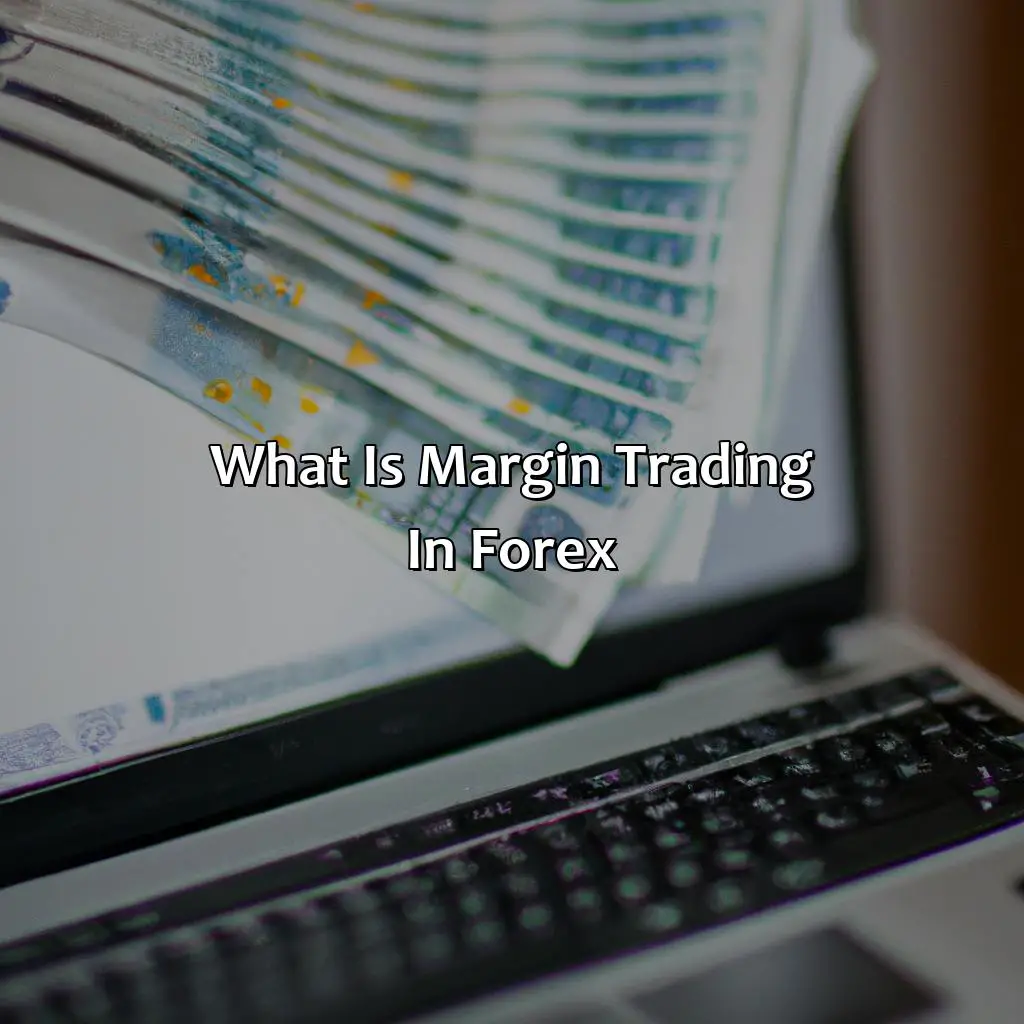
Photo Credits: forexbrokerreport.com by Willie Scott
To grasp margin trading in forex, one must learn its definition. It enables traders to invest more with just a small deposit. This section will introduce the idea of margin trading in forex. It can be broken down into two parts:
- the definition of margin trading
- how it works in forex.
Definition of Margin Trading
Margin trading in forex refers to the practice of borrowing money from a broker to increase an investor’s buying power for trading. In simple terms, it is the act of leveraging borrowed funds to open positions larger than the initial capital of the trader.
Margin requirements in forex refer to the minimum funds that a trader has to deposit with the broker for holding open positions. Brokers usually hold this deposit as collateral against any losses incurred by traders. Margin requirements are typically expressed as a percentage of the total value of the position being held, which varies depending on currency pairs and leverage.
When calculating margin requirements, brokers take into account several factors such as trade size, leverage, bid/ask prices and currency pair. The formula used for margin requirements is – (trade size x price) / leverage.
Forex trading without margin involves opening positions using only the trader’s own capital without borrowing funds from a broker. This option eliminates any risk associated with margin calls or stop-outs but restricts traders’ purchasing power for opening positions.
In history, margin trading originated from commodity markets where farmers needed loans or credit facilities from brokers to finance their operations before selling their harvests at market prices.
Margin trading in forex is like playing with fire, hoping you won’t get burned – but knowing the risks make it more thrilling.
How Does Margin Trading Work in Forex?
Margin trading in forex involves the process of borrowing funds to trade currency pairs. It allows traders to control a more significant amount of money than they have deposited in their accounts, potentially making more significant profits. To commence margin trading in forex, a certain amount of margin must be deposited with the broker, which serves as collateral against any potential losses.
The margin deposit is typically a small percentage of the trade’s total value that varies by broker and currency pair traded. Once the position is opened, traders’ profits or losses are calculated based on the full size of the trade, magnified by leverage.
Furthermore, traders can open larger positions while only risking a portion of their account balance by using leverage. Leverage amplifies gains and losses alike and increases market exposure beyond traders’ account balances.
For instance, if a trader wants to buy $100,000 worth of EUR/USD at a 1% margin rate, they would need to deposit $1,000 into their trading account. The remaining balance is covered through borrowed funds from their broker.
In addition to potential benefits like magnifying gains and increasing market exposure for better opportunities, caution should be taken when employing margin trading due to its associated risks. If trades move against traders’ positions quickly or in large volumes during volatile market conditions or unexpected events, an amplified loss could occur resulting in a margin call forcing the trader to deposit additional funds to prevent liquidation.
Overall Margin Trading is suitable for experienced traders who know how it works and can mitigate risks involved. Why go big or go home when you can just margin?
Margin Requirements for Forex Trading
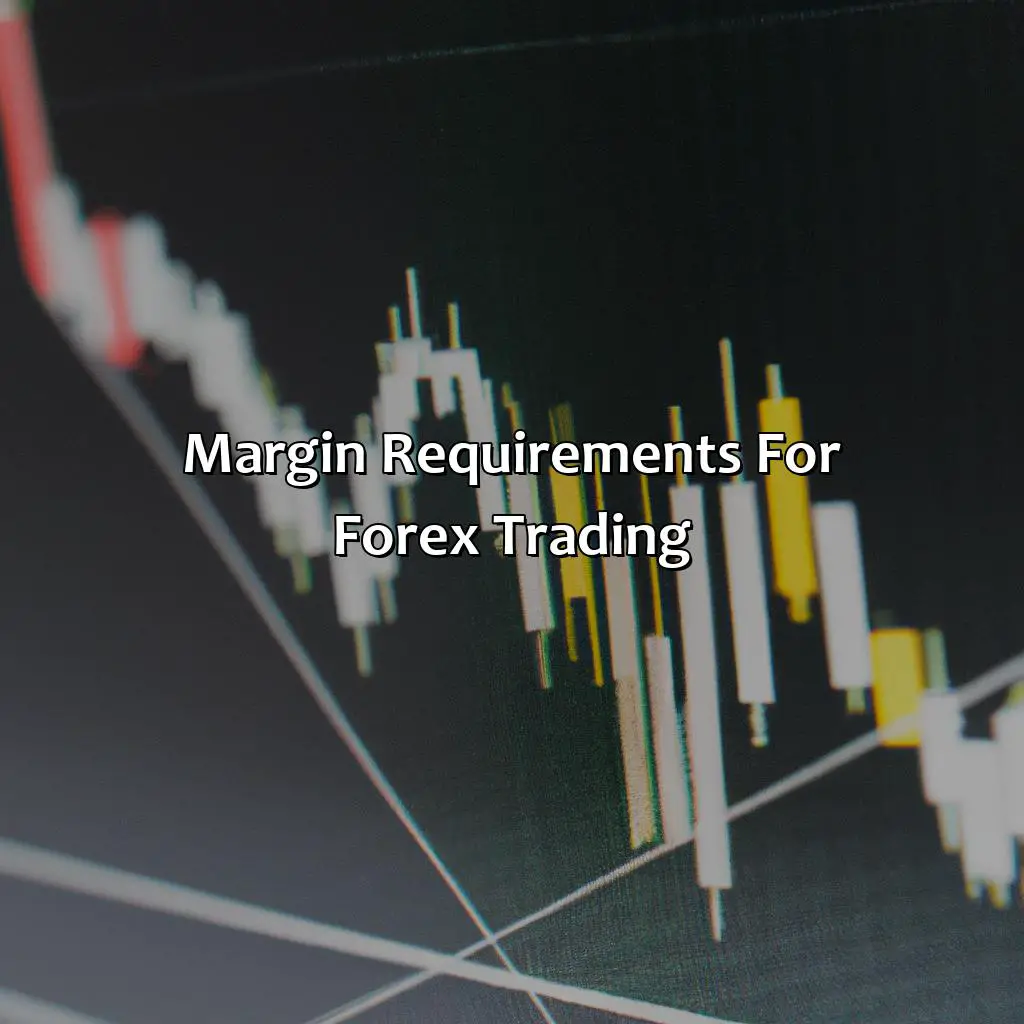
Photo Credits: forexbrokerreport.com by Dennis Walker
To get a better grip on margin requirements for Forex Trading, this section provides help. It’s made up of 3 sub-sections:
- What Are Margin Requirements?
- Understanding Leverage & Margin.
- How Are Margin Requirements Calculated?
These parts will aid in understanding the concept of margin requirements. You’ll also learn the relationship between leverage & margin. Plus, you’ll be able to calculate margin requirements accurately.
What Are Margin Requirements?
Margin requirements can be defined as the minimum amount of funds required to control an open position in trading. It is a portion of the available account balance used to ensure traders have enough funds to cover potential losses if market conditions move against their trade. Margin requirements reduce risks for both brokers and traders in forex trading, and it is a vital aspect that needs to be understood before entering a trade.
In forex trading, margin requirements are calculated based on leverage. Leverage enhances the trader’s buying power, leading to higher profit potential than in traditional markets. Understanding the leverage and margin ratio is essential because it dictates how much margin requirements one needs to enter a trade. The higher your leverage, the lower your margins required.
Margin requirement calculation uses a simple formula: (position size × market price) ÷ leverage = margin requirement. For instance, if you want to trade one lot of EUR/USD at 1:100 leverage with a value of $100,000, your required margin would be $1,000.
It’s possible to trade without margins by opting for no-margin forex trading options such as exchange-traded funds (ETFs), mutual funds or index tracking funds. Conversely, it offers benefits like less risk from exposure to market volatility since there are no capital requirements. However, if you opt for no-margin forex trading, there’s little chance of profiting from trades since returns will never outpace losses.
In 2015, after continued growth since launching in 1990 amidst intense competition between retail foreign exchange brokerages globally, Alpari UK became insolvent due mainly to far-reaching regulatory changes introduced by FCA regarding negative balance protection measures that affected its capital base severely exceeding its free reserve level creating indebtedness beyond its existing business model capacity To honour clients’ obligations with creditors resulting in bankruptcy proceedings filed initially under administration within weeks forced close keeping only Alpari international operating mainly focused on emerging markets outside of Europe.
Understanding leverage and margin is crucial in forex trading, unless you enjoy using your entire savings to buy a cup of coffee.
Understanding Leverage and Margin
Leverage and Margin are key concepts for trading currencies in the Forex market. Leverage, also known as margin trading, allows traders to control a larger position without committing the full amount of capital required for the trade. Essentially, leverage is borrowed money from a broker that enables traders to participate in larger trades than they can afford with their own resources.
Margin is the collateral a trader needs to deposit with their broker in order to hold an open position. It is calculated as a percentage of the total contract value and varies depending on the currency pair being traded, leverage used, and market conditions.
In simpler terms, leverage magnifies returns but also increases risk while margin represents how much money a trader must put up to ensure they have enough funds available for losses that may occur.
To understand how these concepts affect Forex trading and investment decisions, it’s crucial to calculate both using tools provided by brokers’ platforms or through reliable industry resources such as respected financial websites and white papers.
By properly understanding leverage and margin requirements, traders can plan strategic investments before making any trades based on their risk tolerance levels. This way, they can avoid over-committing themselves financially while maximizing potential rewards.
How Are Margin Requirements Calculated?
Margin requirements for forex trading are calculated by brokers based on the leverage ratio decided for the trader’s account. The calculation involves dividing the notional value of the trade by leverage and then multiplying it by the margin percentage required by the broker. This gives traders an estimate of their initial margin requirement to initiate a particular position.
Higher leverage means lower margin requirements, but also increased risk to the trader’s account if a significant loss occurs. Brokers may change margin requirements due to market volatility in response to different events such as extreme geopolitical risks or sudden price movements of assets.
Margin requirements are a critical determinant of a trader’s profitability and must be carefully managed. Traders cannot engage in trades that exceed their available margin as this exposes them to potential losses greater than what they had anticipated while opening the position. It is important to note that changes in market conditions can affect signal strength and volatility, increasing margin requirements and leading traders to incur unexpected losses. As such, calculation of those margins becoming even more critical when determining whether a trade should be carried out or not.
Notably, traders can use stop-loss orders to manage risk exposure while freeing up more funds for other trades that meet their criteria. It is worth researching the stops that may be best suited depending on trading goals or specific asset traits being traded with detailed information on how prone these assets are to price fluctuations in order better deals via suitable management which could mean lesser calculations required at times and better returns overall.
(Fact: According to Investopedia, high levels of leverage allowed in Forex trading can increase profit potential, but also increase exposure to risks.)
Trading forex without margin is like playing poker without any chips – you can’t place any bets and you’ll never win big.
Trading Forex Without Margin
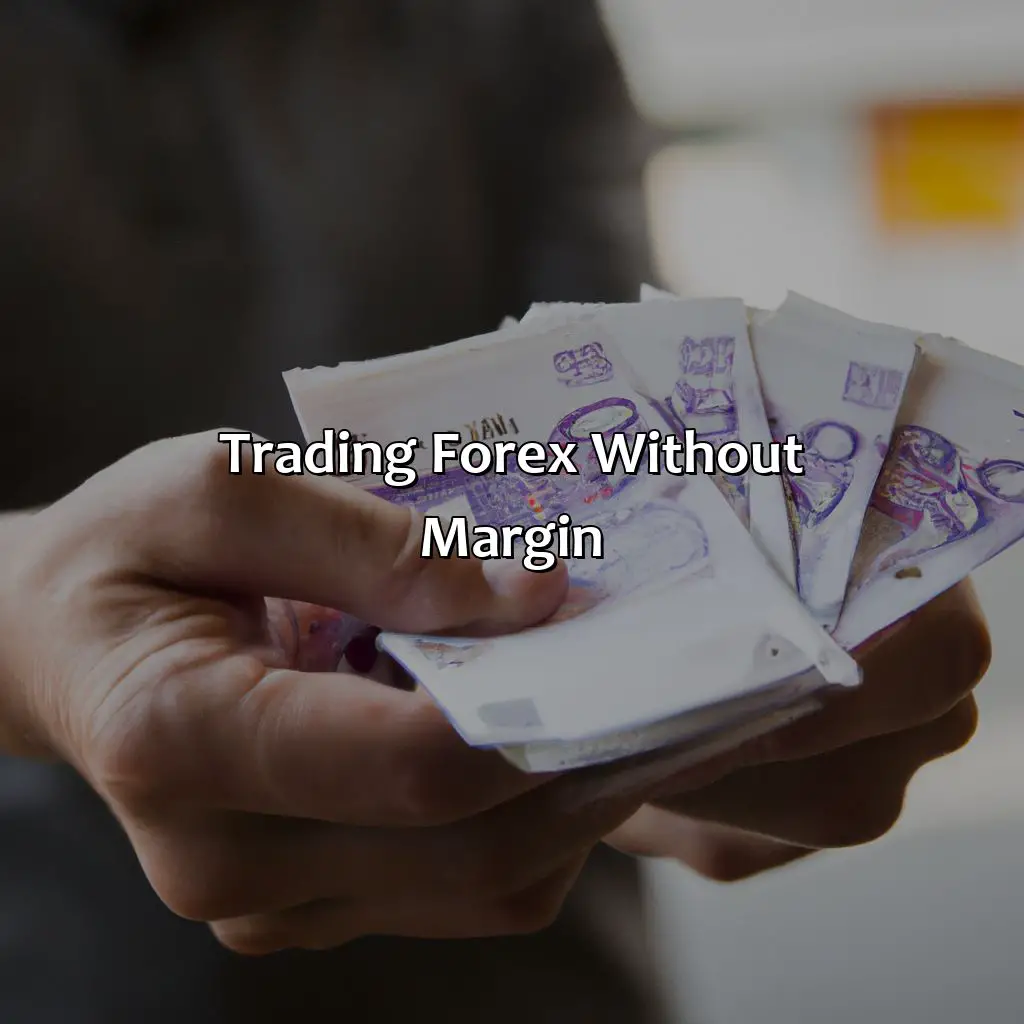
Photo Credits: forexbrokerreport.com by Randy Carter
Trade forex without margin? What are the options? Let us introduce you to the different aspects of no margin forex trading. Explore the advantages and disadvantages. We’ll also look at trading strategies for no margin forex trading. This can help you make successful trades!
No Margin Forex Trading Options
No margin forex trading offers a few options for traders who do not want to use leverage. Such options include cash trading and futures contracts. In cash trading, traders must have the full amount of funds necessary to execute the trade. Futures contracts require larger initial deposits but offer more stability and control. These options reduce the risk of margin calls and help traders avoid the negative effects of excessive leverage.
It is also possible to use stop-loss orders to manage risks when trading without margin. Traders can use these orders to limit their potential losses while still setting realistic profit targets.
In addition, traders can use technical analysis and fundamental analysis in their no margin forex trading strategies. Technical analysis involves studying chart patterns and indicators to predict future price movements. Fundamental analysis involves examining economic data and market trends to identify investment opportunities.
By using these tools, traders can limit their risks while still achieving their investment goals through no margin forex trading.
Trading without margin is like playing poker with no chips – you might win big, but you also might end up with nothing.
Benefits and Drawbacks of Trading Without Margin
Trading forex without margin has both benefits and drawbacks. Let’s explore each of these below.
- Pros of Trading without Margin: Traders with smaller accounts can enter the market without risking a significant portion of their capital. Additionally, they can avoid paying interest on the borrowed money. They also do not have to worry about margin calls, which could lead to forced liquidation of positions in case the trader is unable to meet the margin requirements.
- Cons of Trading without Margin: Without leverage, traders may be deprived of potentially profitable trading opportunities since it enhances returns. Smaller accounts find it difficult to produce meaningful returns, and new investors lacking much experience may over-risk their portfolio.
Margin-less trading indeed offers certain advantages that are not available through trading on leverage. The risk cannot be multiplied by adding leverage margins. The advantages and disadvantages must be weighed carefully before committing to any forms of trade. For instance, retail forex brokers have instituted a zero deposit for trades under $50,000 initially reduced from one hundred thousand U.S dollars so that low-cap investors can become active in forex trading.
I have personally come across amateur investors who start day-trading forex while realizing how little they know about finance or macroeconomics – solely relying on gut feeling whilst unaware of risking significant financial losses. Why use margin when you can trade Forex without it? Here are some strategies for no-margin trading that may just change your mind.
Trading Strategies for No Margin Forex Trading
To achieve profits in trading Forex without margin, one must follow specific trading strategies that are risk-averse and profitable. Here are some popular trading strategies for no margin forex trading:
- Trading with smaller quantities to lower the potential risk.
- Crafting a Simple Trading Plan with clear orders and exit plans.
- Position Sizing Plans that manage risk exposure based on account size.
- Applying the Fundamental Analysis Method to assess macroeconomic factors affecting currency prices.
- Implementing Technical Analysis through identifying price trends and patterns or using automated systems to do so.
- Trade Management Strategies like Stop-loss orders, Trailing stops, and Take profit orders can help lock-in profits and minimize losses.
Ensure that you implement these strategies consistently while keeping track of your trades’ actions and market trends.
Trading Forex without margin may limit your potential gains but could be safer than availing leverage. As you don’t have to worry about finding enough money to cover the positions if prices move against you, it means less stress in trading. However, make sure you consider the risks as well before applying these strategies.
History shows several traders followed a disciplined approach of taking small trades with strict entry-exit rules giving them significant returns in No Margin Forex Trading.
Trading forex without margin is like going to a gunfight without ammo – not recommended for the faint of heart.
Some Facts About Trading Without Margin in Forex:
- ✅ Trading without margin means you are using only your available cash to trade in the forex market. (Source: FXCM)
- ✅ Trading without margin can lower your risk and prevent unexpected losses. (Source: Investopedia)
- ✅ Trading without margin means you cannot leverage your trades as much, which can limit potential profits. (Source: DailyFX)
- ✅ Some brokers may require a minimum balance to trade without margin. (Source: NerdWallet)
- ✅ It is important to carefully consider your trading strategy and risk tolerance before choosing to trade without margin. (Source: BabyPips)
FAQs about Can I Trade Without Margin In Forex?
1. Can I trade in forex without margin?
Yes, it is possible to trade forex without margin by using a cash account. However, this method restricts the amount of funds available to trade and may limit your strategy.
2. What is a good forex trading strategy for beginners?
A good strategy for beginners is to start with a demo account to practice and learn the basics, then move onto a live account with a low minimum deposit. It’s important to have a solid understanding of risk-management and have a clear trading plan.
3. What fees should I be aware of when trading forex on a live account?
When trading forex on a live account, you should be aware of commission fees and overnight swap fees. Commission fees vary depending on the broker, while swap fees are charged for holding positions overnight.
4. How can I calculate overnight swap fees?
Overnight swap fees can be calculated by checking the swap rates for the currency pairs you are trading. These rates can typically be found on a broker’s website or trading platform.
5. Can I avoid paying overnight swap fees?
Yes, you can avoid paying overnight swap fees by closing out your positions before the end of the trading day or by using a swap-free account. However, swap-free accounts may have other restrictions or fees, such as higher spreads.
6. Will I need to use margin at any point when trading forex?
Yes, margin is typically required when trading forex on a live account. Without margin, your trading options and potential profits may be limited. However, it’s important to use margin responsibly and always be aware of the associated risks.

